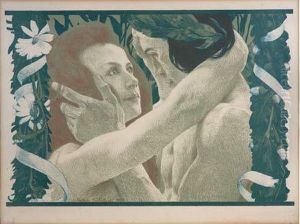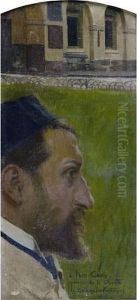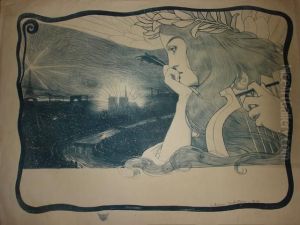Henri Jules Ferd. Bellery-Desfontaines Paintings
Henri Jules Ferdinand Bellery-Desfontaines was a French artist and designer, primarily known for his contributions to the Art Nouveau movement. Born on March 26, 1867, in Paris, France, Bellery-Desfontaines grew up during a period of rich artistic innovation and would go on to become one of the prominent figures in the decorative arts of his time.
Initially trained as an architect, he soon found his passion in graphic arts and illustration. He began his artistic career as an illustrator, creating graphics and designs for books and magazines. His work was heavily influenced by the Art Nouveau style, which was characterized by its use of organic forms, flowing lines, and incorporation of natural elements such as flora and fauna. Bellery-Desfontaines's illustrations often featured elaborate compositions with a strong sense of symmetry and were marked by a certain elegance and refinement.
Bellery-Desfontaines extended his talents to various mediums, including poster art, furniture design, and interior decoration. He was particularly adept at integrating lettering with pictorial elements, which made his poster designs stand out. His ability to blend text and image seamlessly was a valuable skill in the advertising-driven culture of the late 19th and early 20th centuries. He also designed typefaces, book bindings, and other decorative objects, leaving a versatile and multifaceted body of work.
His contributions to the 1900 Exposition Universelle in Paris solidified his reputation as a master of the Art Nouveau style. Unfortunately, Bellery-Desfontaines's life and career were cut short when he died on September 22, 1909, at the age of 42. Despite his relatively brief career, his work had a lasting impact on the decorative arts and continues to be studied and admired for its beauty and craftsmanship. Bellery-Desfontaines's legacy is that of an artist who embodied the spirit of Art Nouveau and who influenced the aesthetic preferences of his time.


